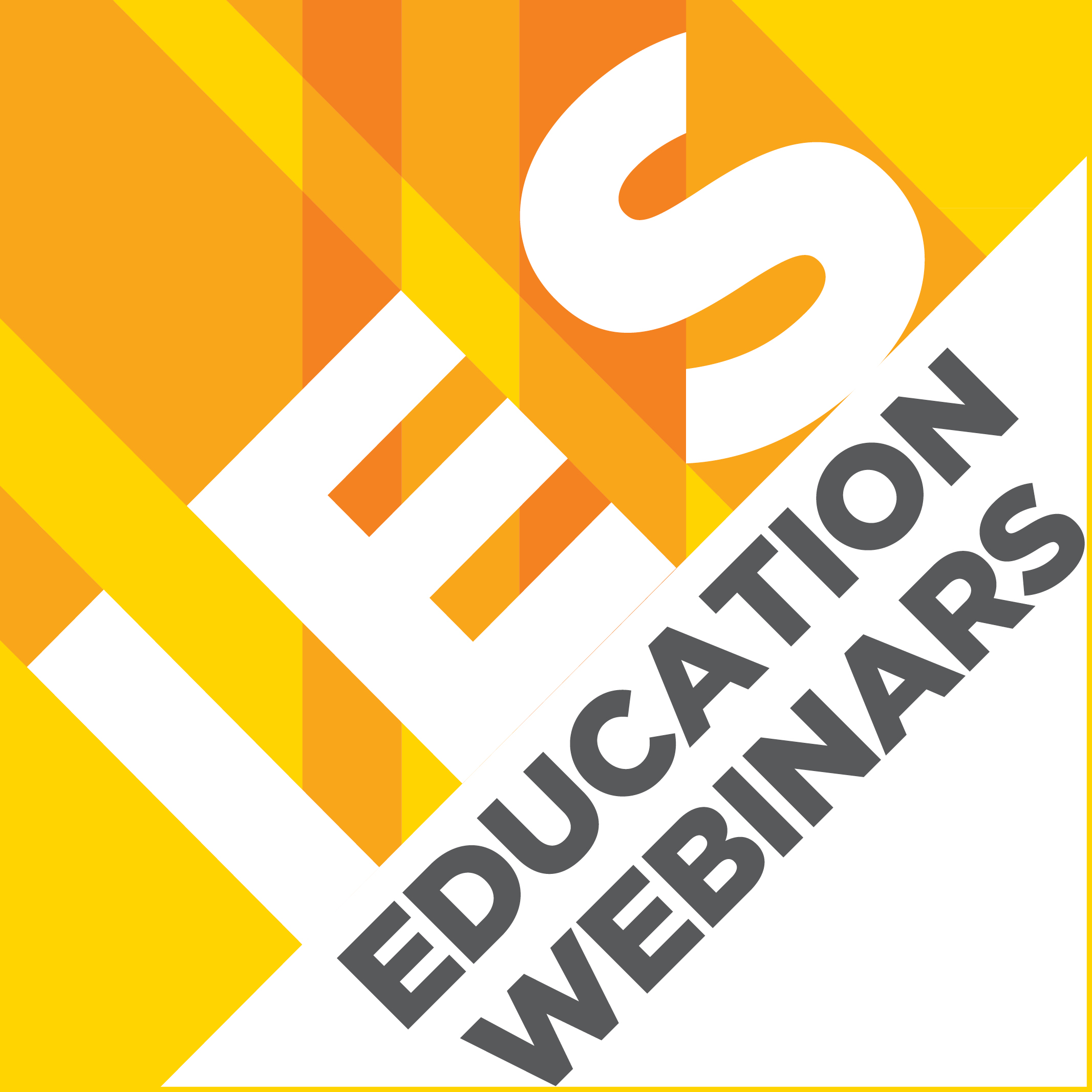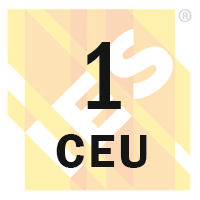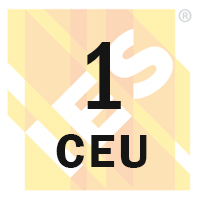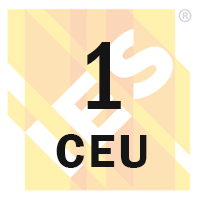
Metrics in Motion Package
-
Register
- Non-member - $120
- Member - Free!
Metrics in Motion was a series of webinars produced in collaboration with the Pacific Northwest National Lab. Delivered by renowned experts in their respective fields, these webinars address current lighting quality factors and upcoming research. Please refer to the individual videos for a description of each course.
-
Contains 3 Component(s), Includes Credits
This webinar will address some of the questions being pursued in Connected Lighting research, such as how to evaluate the accuracy of energy and electrical data that can be reported by connected lighting systems, and how and where to measure energy use in systems that are capable of essentially continuous change, tuning, and adaptation.

About this Course
The IES offers Educational Webinars throughout the year, purposefully spanning a broad range of topics and speaker expertise. Metrics in Motion: Connected Lighting was a live webinar, now available as an archived webinar and CEU course.
Description: The combination of high-efficiency LED technology with seamless control and new features enabled by network connectivity presents a compelling vision for the future of lighting. Much work remains to translate that vision into successful installations, value-added functionality, and proven benefits, including energy efficiency. PNNL researchers are engaged in multiple studies designed to understand and quantify the performance of emerging connected lighting systems. In particular, the ability to measure energy performance at the device and system level is an important focus. This webinar will address some of the questions being pursued in this area, such as how to evaluate the accuracy of energy and electrical data that can be reported by connected lighting systems, and how and where to measure energy use in systems that are capable of essentially continuous change, tuning, and adaptation.
Learning Objectives:
By the end of this course learners will be able to...
1. Describe Connected Lighting and the system components (network devices, light sources, sensors, etc.) within it.
2. Identify the benefits of energy monitoring and electrical data within a space, and how to interpret that data.
3. Explore lighting design criteria and the potential impact of Connected Lighting.
4. Consider traditional lighting energy metrics, and the influence Connected Lighting can have on the future of these metrics.
Michael Poplawski
Senior Engineer
Pacific Northwest National Laboratory
Michael Poplawski is a senior engineer, principal investigator, and data-driven design team lead at Pacific Northwest National Laboratory, where he primarily supports the U.S. Department of Energy Building Technologies Office. His research efforts focus on developing digital tools and workflows and semantic models that facilitate building system integration and the use of software applications that support system configuration, operational energy management and maintenance, electric grid interaction, and other data-driven use cases.
-
Contains 3 Component(s), Includes Credits
This webinar will look at recent developments in the specification and evaluation of color rendition including an overview of TM-30-18 and subsequent developments. How those developments could change lighting practice over the next 10 years will also be explored.

About this Course
The IES offers Educational Webinars throughout the year, purposefully spanning a broad range of topics and speaker expertise. Metrics in Motion: Color Metrics was a live webinar, now available as an archived webinar and CEU course.
Description: After decades of debate and living with limitation, new color metrics for both color rendition and chromaticity have been standardized by the IES and/or CIE. While science has advanced, the practice has been slower to evolve. This webinar will look at recent developments and how they might change lighting practice over the next 10 years. It will demonstrate how all constituents in the lighting community can benefit from using metrics that fit the capabilities of today’s lighting technologies. Manufacturers can more effectively evaluate performance tradeoffs and communicate product performance, allowing differentiation with novel products; specifiers can reduce uncertainty and avoid unsightly consequences, and researchers can use improved methods to investigate fundamental lighting science challenges.
Learning Objectives:
By the end of this course learners will be able to...
1. Understand the history of chromaticity (color of light) measurement and utilize descriptors of it.
2. Explore concepts of color rendition including metamerism and chromatic adaptation.
3. Understand the basics of TM-30, and new supplemental information including Annex E.
4. Learn recommendations and limitations of color criteria in specification.
Michael P. Royer
Engineer
PNNL
Dr. Michael Royer is a chief engineer at the Pacific Northwest National Laboratory (PNNL), where he leads the lighting research sponsored by the U.S. Department of Energy. He conducts experiments to help refine metrics and specification guidance, with the ultimate goals of advancing lighting quality to improve building occupants’ satisfaction and wellbeing while increasing the use of energy efficient lighting technologies. Michael is a Fellow of the Illuminating Engineering Society (IES) and serves on the IES Vision Science committee and the IES Color committee. Prior to joining PNNL, Michael earned a Ph.D. in Architectural Engineering from Penn State University. He has authored over 80 peer-reviewed journal articles and government reports.
-
Contains 3 Component(s), Includes Credits
This webinar will provide an up-to-date evaluation of progress in addressing flicker and glare (critical lighting quality factors), their implications for energy-efficient LED lighting, and where additional research is needed.

About this Course
The IES offers Educational Webinars throughout the year, purposefully spanning a broad range of topics and speaker expertise. Metrics in Motion: Flicker & Glare was a live webinar, now available as an archived webinar and CEU course.
Description: Flicker and glare are visual phenomena that have several things in common: both can range from mildly annoying to seriously disabling, both can be made worse by poorly designed LED lighting and better by good LED lighting, and both are the subject of research by PNNL that is helping to further industry-standard metrics, methods of measurement, and recommended practice. This webinar will provide an up-to-date evaluation of progress in addressing these critical lighting quality factors, their implications for energy-efficient LED lighting, and where additional research is needed.
Learning Objectives:
By the end of this course learners will be able to...
1. Understand why LEDs (as wonderful as they are) have made the issues of glare and flicker more tricky, compared to conventional lighting technologies.
2. Learn some of the limitations and a proposed improvement to the UGR metric.
3. Acknowledge that flicker is an issue of the driver electronics and dimming systems, and compare several flicker metrics.
4. Learn some tips and tricks for identifying flicker from light sources.Naomi Miller
Senior Lighting Engineer
Pacific Northwest National Lab
Naomi Miller is a designer and scientist working at Pacific Northwest National Laboratory to improve lighting quality using LED light sources and to bridge the gap between technology and application. Her pet peeves include flicker and glare, and she is an active member of CIE and IES committees developing recommendations on outdoor glare, flicker, and light’s effect on human health.
-
Contains 3 Component(s), Includes Credits
This webinar will look back at the background of circadian metrics, and look forward to the opportunities and challenges facing the future development and implementation of circadian metrics in the built environment.

About this Course
The IES offers Educational Webinars throughout the year, purposefully spanning a broad range of topics and speaker expertise. Metrics in Motion: Circadian Metrics was a live webinar, now available as an archived webinar and CEU course.
Description: The enthusiasm for healthier buildings has aligned with advances in LED technology, controls, and research exploring the human biological response to light. This alignment has lead to a rise in health claims related to lighting, yet there is still much to learn regarding the relationship between light and human biology. This webinar will look back at the background of circadian metrics, and look forward to the opportunities and challenges facing the future development and implementation of circadian metrics in the built environment.
Learning Objectives:
By the end of this course learners will be able to...
1. Discover the history of the research into light and its effects on human circadian rhythms.
2. Investigate the challenges that confront researchers in their search for the "magic pill" of light prescription.
3. Explore the way properties of light contribute to spaces that are welcoming, comforting, and relaxing.
4. Learn to understand and discuss circadian lighting with the appropriate terms and definitions.
Andrea Wilkerson
Lighting Engineer
Pacific Northwest National Laboratory
Andrea Wilkerson is a senior lighting research engineer at Pacific Northwest National Laboratory, focusing on the evaluation of emerging lighting technology in support of the U.S. Department of Energy Lighting Program. She earned her doctorate from Penn State and her BS and MAE from the University of Nebraska in the respective architectural engineering programs.


